Keto Diet Plan Week 4. Wondering how to calculate macros for a Ketogenic diet? It's easier than you think. Learn how and more in week 4 of keto tips.
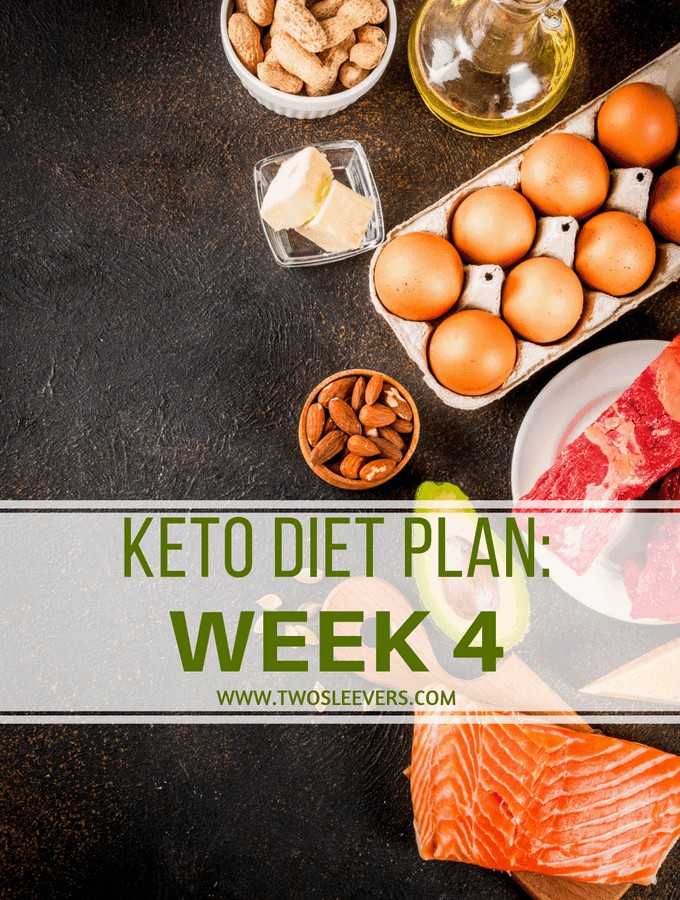
First, a disclaimer: I am not a medical, or health care professional so you definitely want to consult what my sons call "a real doctor, not a Ph.D. like my Mom". My only objective here is to show people how easy it can be to start on keto using baby steps and achievable goals.
If by chance you haven’t started a keto diet or have just started thinking about keto check out my Week 1 Keto Diet Plan. Then read over the following weeks for the best success.
You've made it to Keto Diet Plan Week 4. By now you are familiar with what you can and can’t eat on a keto diet. You’ve probably started burning fat instead of carbs and you may have already lost some weight.
This is week 4 of keto tips where we will become serious about starting to calculate all of your macros.
Keto Diet Plan Week 4
This is a short series on how to start keto. Some of us want to jump into Keto cold turkey. Others might want to ease in. For those of you who are wondering how to start keto:
GET THE FREE PRINTABLE CHART FOR 4 WEEKS TO KETOSIS BY CLICKING HERE!
It’s time for us to get a better understanding of macros and why they matter. My aim here is to be accurate but not comprehensive. So, I am going to simplify this section as best as I can.
Here's are the topics we are covering in Keto Diet Plan Week 4:
- What are macros?
- How many calories in C/P/F
- Why calories matter on a keto diet.
- The very basics of weight loss
- What roles do macros play in insulin release?
- How to calculate macros on a keto diet?
- What is the difference between total carbs and net carbs?
- Do calories matter on a keto diet?
- Do I have to eat all that fat on a keto diet?
- Do I need to adjust calories as I lose weight on a keto diet?
- What's the bottom line?
WHAT ARE MACROS?
For our purposes, macros or macronutrients are carbohydrates, protein, and fat. All of your food can be thought of as different combinations of C/P/F. Much of the keto diet and staying in ketosis is achieved by maintaining the desirable balance between these macros. For Keto Diet Plan Week 4 you need to understand this.
On a typical keto diet plan, you want to take in between 20-40 grams of carbs each day, you want enough protein to maintain muscle mass, and you want enough fat to provide satiety.
Here’s a high-level review of which foods contain a lot of carbs and should have already been cut from your keto diet:
- Starches such as pasta, rice, potatoes, bread, oats
- Sugars such as sugar, honey, molasses, high-fructose corn syrup
- Grains such as quinoa, wheat, amaranth, millet
- Beans and legumes such as kidney beans, chickpeas, black-eyed peas (except black soy beans)
- Fruits, especially tropical fruits (berries are lower carb than other fruits)
- Starchy vegetables like peas, corn, sweet potatoes, winter squash etc.
HOW MANY CALORIES IN C/P/F?
- Carbs and Protein each have 4 calories per gram
- Fat has 9 calories per gram
WHY DO MACROS MATTER ON A KETO DIET PLAN?
There’s a reason you are calculating macros. It’s because they serve as a proxy for things that will keep your insulin and your blood sugar in check. By themselves, they don’t mean that much.
People argue endlessly about whether this ingredient or that “is keto”. It’s not an ingredient per se you should worry about—you should worry about being in ketosis. There are ways to both get into and then stay in ketosis.
The ways to do that are:
- Control what you eat
- Control when and how often you eat
For our Keto Diet Plan Week 4, let’s talk about what you eat first, and the role macros play in this. I will discuss fasting or controlling how often you eat, in a separate post later.
THE VERY BASICS OF WEIGHT LOSS
For your Keto Diet Plan Week 4, here’s what you need to know about weight loss in a nutshell. (Assuming your weight gain was related to excess consumption of carbohydrates, insulin resistance, excess appetite and the like). This is especially important as you settle into a keto lifestyle.
- You are either FEASTING (eating or having just eaten within the last 2-4 hours) or you are FASTING (haven’t eaten in a while.)
- While you are feasting, your body is releasing insulin.
- While you have insulin in your bloodstream you are not burning fat.
- The way to burn fat is to a) not eat (fast) for long periods and b) eat foods that don’t cause you to release excess insulin.
- FEASTING = INSULIN.
- INSULIN = NO FAT BURNING
- FASTING = NO INSULIN
- NO INSULIN = FAT BURNING.
EVERYTHING else about keto diets is just how to not release excess insulin so your body has a chance to burn fat. As I said earlier, the ways to do that are a) control what you eat; and b) control when and how often you eat.
WHAT ROLES DO MACROS PLAY IN INSULIN RELEASE?
Understand these three (oversimplified) facts and you will understand how to eat for your keto diet plan.
Understand these three (oversimplified) facts and you will understand how to eat for your keto diet plan.
- Carbs will make you release a LOT of insulin.
- Protein, if eaten to excess, will make you release some insulin, but if you eat moderate amounts of protein you will be fine.
- Fat will not cause you to release insulin.
So, the way to keep your insulin down is to eat more fat, eat moderate protein, very few carbs, and go long periods without eating. That’s it. There’s really no need to complicate things beyond this.
Let’s add to our previous equations.
- FEASTING = INSULIN
- CARBS = INSULIN
- EXCESS PROTEIN = INSULIN
- INSULIN = NO FAT BURNING
- FASTING = NO INSULIN
- FAT = NO INSULIN
- LOW CARBS = LOW INSULIN
- MODERATE PROTEIN = LOW INSULIN
- NO INSULIN = FAT BURNING
As I said earlier, oversimplified view, but accurate nonetheless.
HOW DO YOU CALCULATE MACROS ON A KETO DIET PLAN?
Let’s get this out of the way. There is nothing magic about the 20 grams of carbs everyone keeps talking about on keto. The right number of carbs are what will get you into ketosis and help you stay there, which is why we’re discussing this for our Keto Diet Plan Week 4.
- For some people, that’s 20 grams of carbs. For other people, it’s 40 grams of carbs. The majority of us will reach ketosis at 20 grams of carbs if sustained over several days.
There are complicated ways to calculate macros But we are going to keep it stupid simple for our Keto Diet Plan Week 4.
- You are going to get 20 grams of carbs.
- You are going to get 60% of your calories from fat.
- The rest of your calories will come from protein.
The EASIEST way to do this is to use a fitness calculator such as Cronometer or MyFitnessPal and let them do the calculations for you. You just specify 20 grams of carbs, 60% from fat, and the rest from protein and the app will calculate for you.
But if you insist on calculating it yourself, follow my logic below, if not, skip to the next section
How to Calculate Macros for Keto
Remember that Carbs and Protein each have 4 calories per gram. Fat has 9 calories per gram.
- Total calories. Start out by looking at the total calories you need. I won’t repeat those calculations here since there are many reputable calculators out there. Let’s say that I need 1200 calories a day to lose weight.
- Carbohydrate calories. We will assume you need 20 gms of carbs to be in ketosis:
- 20 gms x 4 calories = 80 calories from carbs. This leaves you 1110 calories to play with.
- Fat Calories. 60% of your calories will come from fat:
- 1200 multiplied by 60% (.60) = 720 calories
- 720 calories at 9 calories per gram = 80 grams of fat
- Protein. The remainder of your calories will come from protein.
- I have used up 80 calories with carbohydrates + 720 calories with fat, which leaves me 400 calories additional calories per day.
400 calories at 4 calories per gram = 100 grams of protein. So this will be my basic daily macro breakdown.
WHAT IS THE DIFFERENCE BETWEEN TOTAL CARBS AND NET CARBS?
Total carbs minus Fiber minus sugar alcohols= net carbs.
If you’re diabetic, you may need to track total carbs. Many of the rest of us do well tracking net carbs as fiber and sugar alcohols do not raise blood sugar or insulin levels for most people.
DO CALORIES MATTER ON A KETO DIET PLAN?
Yes, they do.
Your body, much like me is #lazyefficient. Given a choice, it will use energy from food to fuel itself. What you want is to make that body work to use body fat to fuel itself. This is a vastly oversimplified description of how your body works but stay with me for a minute.
The way to make your body use body fat to fuel itself is to keep insulin levels low, and to not give it so much energy from food that it never needs to use body fat to fuel itself.
So yes, calories do matter. But two things help. First, you will likely not be that hungry when eating a keto diet plan because you won’t be crashing and burning from carb intake. Second, most people seem to be able to eat more (but not unlimited) calories on keto than on high carb diets. Especially once you hit your Keto Diet Plan Week 4.
Now I will freely admit research on this is murky and the usual calories in-calories out equations are not always backed by science. But I have yet to meet anyone who has eaten tons of calories and lost weight. If you can do that, more power to you. The rest of us schmucks need to track calories.
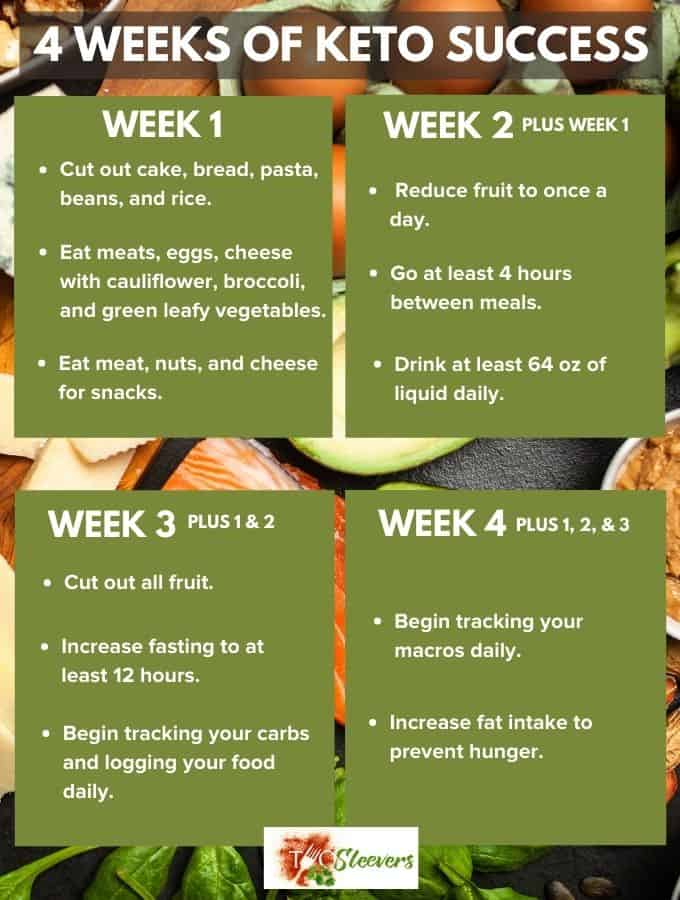
DO I HAVE TO EAT ALL THAT FAT ON A KETO DIET PLAN?
This area is murky and I will be the first to admit that scientific studies for this are sparse and badly conducted. But I can share what works for me, and you can experiment with what works for you.
Here’s what you need to know: Fat grams on keto are a limit, not a level, meaning you don’t go over your calculated fat macros, but don’t eat them all if you don’t need them. If you’re hungry eat fat. Remember: FAT = NO INSULIN = FAT BURNING.
Personally, I feel that eating protein matters since it helps with maintaining muscle and when you’re losing weight you do not want to lose muscle. So, here’s how I treat it:
- Protein = Level and Limit. Hit the level and do not exceed the limit
- Carb = Limit. Do not exceed (but don’t have to eat it all.)
- Fat = Limit. Do not exceed (but don’t have to eat it all.)
So, eat fat to satiety. If you’re hungry, eat all the fat grams. If you’re not hungry don’t eat all the fat grams.
In my personal experience, I eat all my protein, I keep carbs at 20 grams per day and I eat the fat specified. If I don’t lose weight, I cut calories. Since I don’t want to cut protein, I have to cut fat calories.
Then this puts my percentages out of whack and all of a sudden I am consuming less fat as a percentage and now I want to tear my hair out! Except. I don’t.
Those percentages? Nothing holy about them. They are merely heuristics. What matters is total insulin load and blood sugar swings. If I eat 20 grams of carbs, 100 grams of protein and whatever fat I need to stay full while staying within my calorie limits I am doing just fine. So don’t let the numbers make you crazy. Follow your body – and the scale.
In other words, stop worrying so much about details. Focus on the big picture which is: Keep carbs low. Keep protein moderate. Eat mainly fat to keep yourself full. If you’re in ketosis and not losing weight, cut calories.
DO I NEED TO ADJUST MACROS AS I LOSE WEIGHT ON A KETO DIET PLAN?
Yes, you will need to adjust calories downward as you lose weight. The easy answer to this is that if you are losing weight, don’t worry about readjusting so much. If you stop losing weight, it’s time to tweak.
If you need to be more regimented, then every 10 lbs. or so, readjust your calories. As you get closer to goal weight, you may have to adjust after every 5 lbs. of weight loss. As you adjust calories, re-adjust your macros.
SO WHAT’S THE BOTTOM LINE FOR THE KETO DIET PLAN WEEK 4?
Stop worrying so much about details. Focus on the big picture which is: Keep carbs low. Keep protein moderate. Eat mainly fat to keep yourself full. If you’re in ketosis and not losing weight, cut calories.
You may also want to check out my Keto Instant Pot Cookbook–the only Keto Cookbook authorized by Instant Pot. This cookbook is full of delicious recipes that even your non-keto Family will love and has the macros easily identified so no calculations needed!
GET THE FREE PRINTABLE CHART FOR 4 WEEKS TO KETOSIS BY CLICKING HERE!
If you need some moral support, we have a great FB family support page here.
Recipes You Will Enjoy on Week 4:
- Keto Tuscan Chicken - NO ONE will know this is a Keto meal unless you tell them. It's crazy good!
- Keto Granola - This is so good as a cereal or with yogurt!
- 15+ Chaffle Recipes - discover the beauty of Chaffles, or Keto Waffles! They're amazing savory as a bread substitute, or as a sweet breakfast/dessert option!
That's it for the Keto Diet Plan Week 4. From here you will begin to refine and adjust based on your body’s needs, but you have all the basics to be successful in your keto lifestyle.
Don't forget to check out my other Keto cookbooks.
Keto Instant Pot, Keto Fat Bombs, Sweets, & Treats, and Easy keto in 30 minutes.
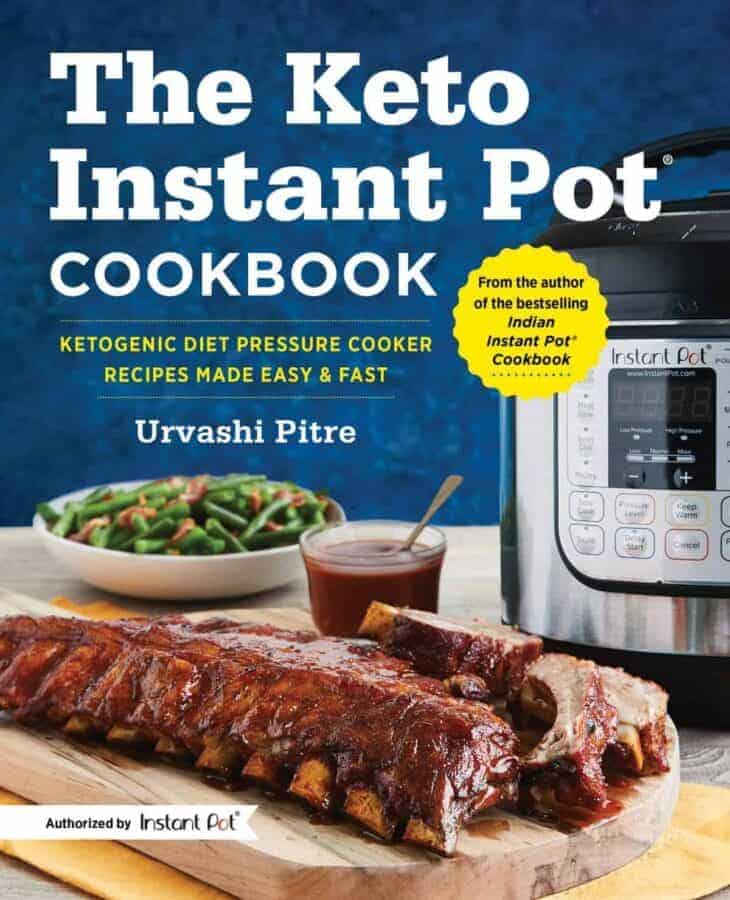
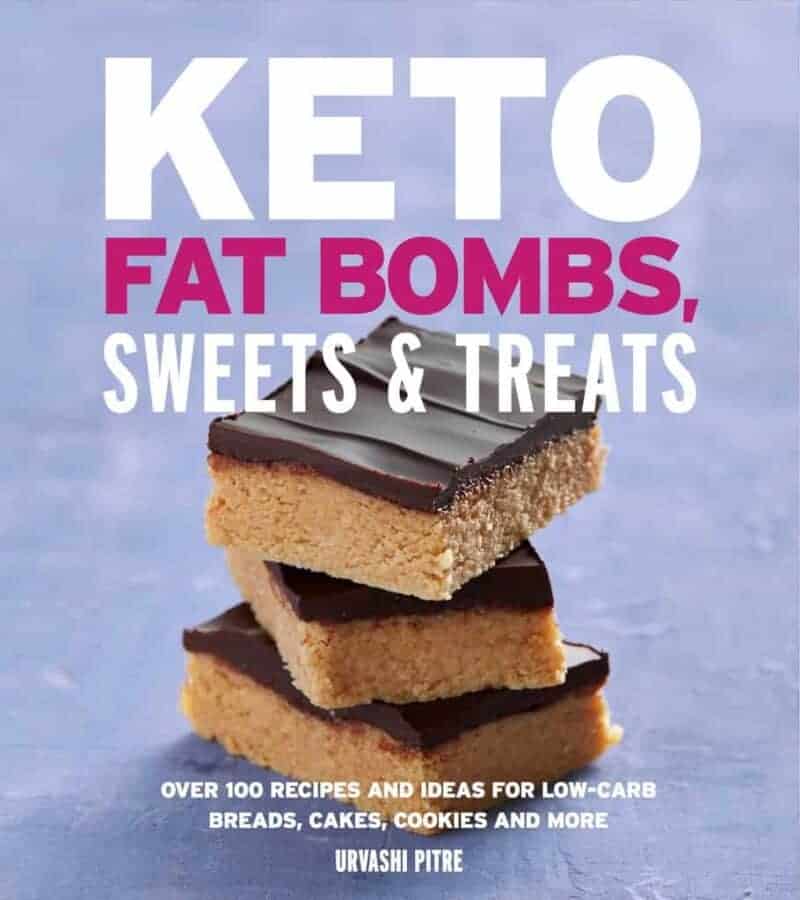
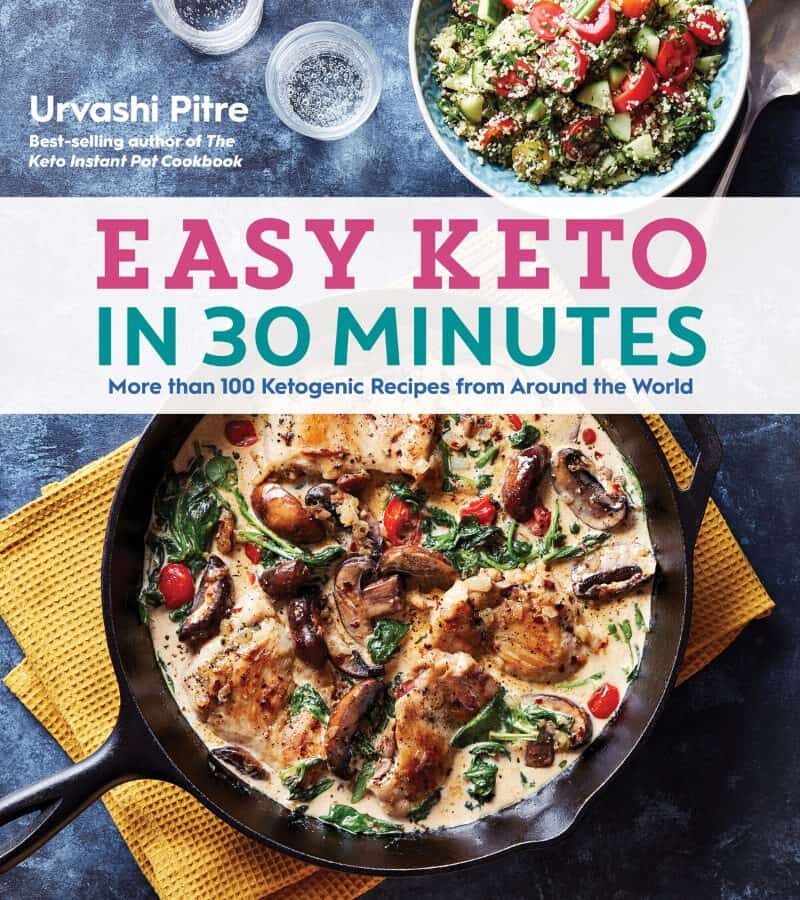

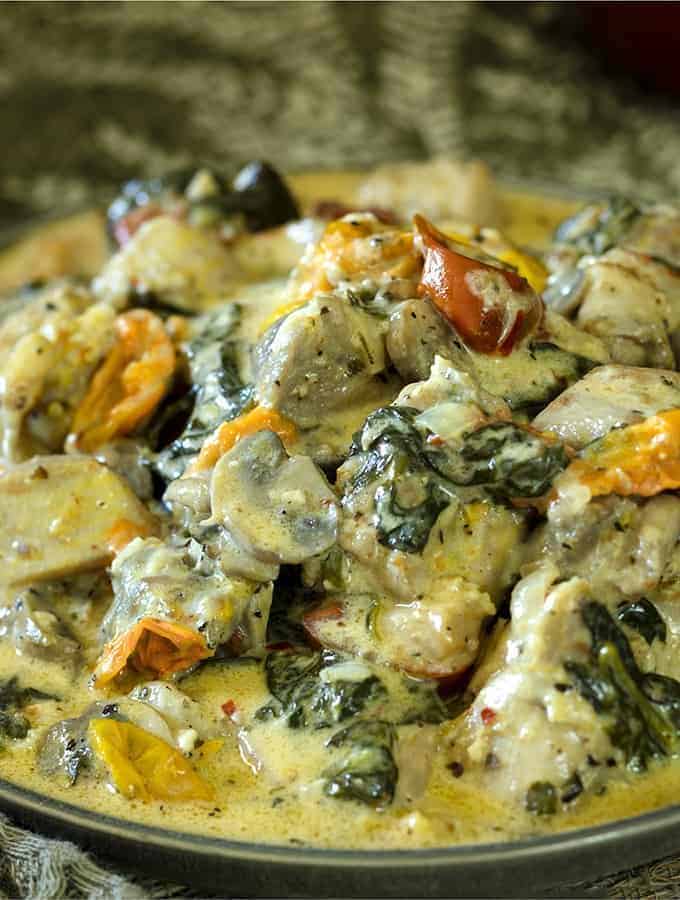
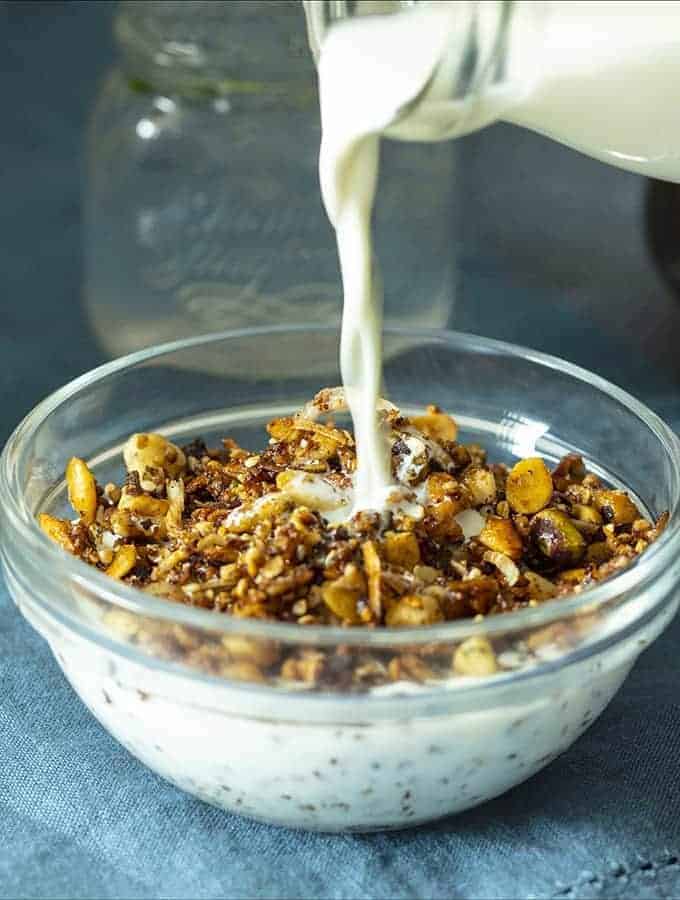
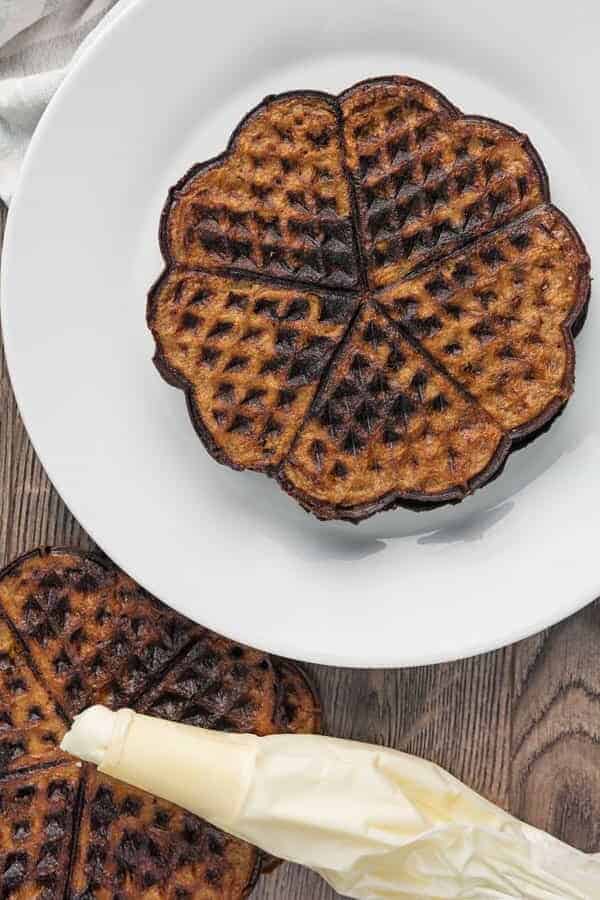
Nicole
Your simple digestible nuggets of advice have been so helpful in my Keto journey. Thank you so much!
alkatone
I know where the images from the blog posts are, but don't know where to look for the blog posts in my backups. Can you help? Hope it's not a silly question..
surrealchereal
Thank you for taking the time to share your knowledge, I found the answers I was looking for. Seems so many people and professionals don't want to address that dirty word calories.